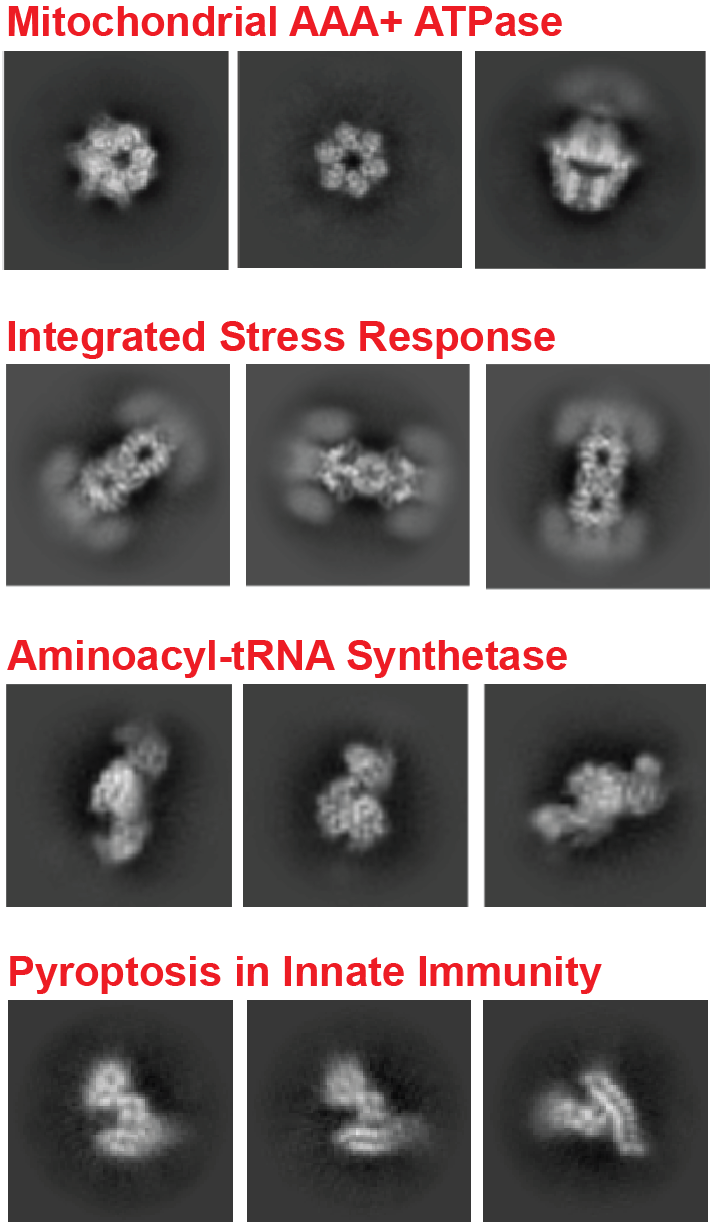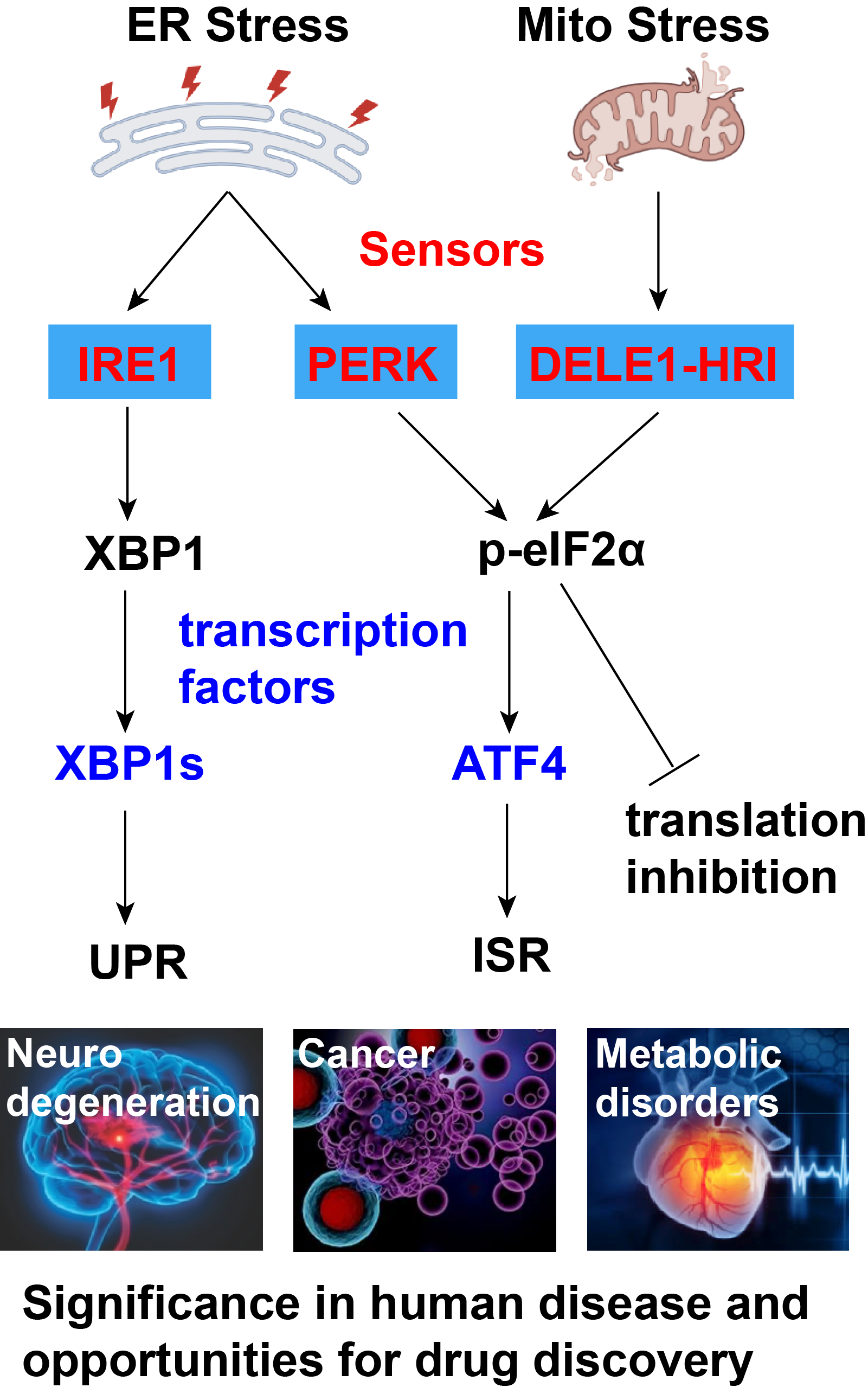Research
Single particle cryo-EM for macromolecular complexes

We are interested in applying cryo-EM to determine high-resolution structures of macromolecular complexes involved in various biological processes. The Yang lab is developing a high-throughput pipeline that leverages the world-class cryo-EM infrastructure and computational resources at UVA to solve the structures of diverse protein complexes, irrespective of their size, shape, and flexibility. This pipeline has the added capability to detect multiple conformational states from single datasets.
We are also actively advancing cryo-EM technology by enhancing sample preparation and data processing techniques. Our efforts have yielded success in determining high-resolution structures of challenging cryo-EM samples through rational in silico design. For example, we fuse our proteins of interest with selected scaffolds or solubilization tags to increase protein size, overcome preferred orientation, and improve stability. Additionally, we work to ameliorate the problematic behavior of protein samples at the air-water interface by using customized graphene grids. We are excited to apply our cryo-EM pipeline and capacity to different biological systems and welcome collaborations with local and remote research groups interested in using cryo-EM to investigate impactful protein targets.
Mechanistic investigation of cellular stress response and its implications in human disease

We are focused on dissecting the molecular mechanisms of cellular stress response, with a particular emphasis on mitochondrial stress, endoplasmic reticulum (ER) stress, downstream unfolded protein response (UPR) and integrated stress response (ISR). Our interdisciplinary approach integrates structural biology (cryo-EM/cryo-ET), biochemistry (protein characterization), and cell biology (fluorescent imaging).
The main questions we are addressing include:
1. How do stress sensor proteins such as IRE1, PERK, and DELE1-HRI detect distinct upstream cellular stress signals?
2. What are the structural mechanisms that activate these stress sensor proteins?
3. How do they induce downstream stress-response signaling?
The ultimate goal is to modulate these stress response pathways in both physiological and pathological conditions, potentially leading to the development of novel therapeutics for related human diseases, including neurodegeneration, metabolic disorders, and cancer. To do so, we have also established collaborations with experts in disease-relevant mouse models to complement our mechanistic findings.